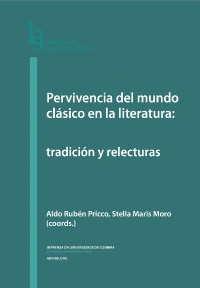Please use this identifier to cite or link to this item:
https://hdl.handle.net/10316.2/90295| Title: | El mito de Orfeo y la experiencia artística en Jean Cocteau | Other Titles: | The myth of Orpheus and Jean Cocteau’s artistical experience | Authors: | Paz, Alejandro Palma | Keywords: | Orpheus;drama;drama;cinema;artistic experience;Orfeo;surrealismo;drama;cine;experiencia artística | Issue Date: | 2017 | Publisher: | Imprensa da Universidade de Coimbra | Journal: | http://hdl.handle.net/10316.2/42874 | Abstract: | The present article aims to analyze the drama Orpheus (1927) and
the film Testament of Orpheus (1960) by Jean Cocteau, from two important aspects:
first, the role of the mythical greek poet Orpheus for the development of the author’s
artistic project and, secondly, to review how this project fits or not as part of the
postulates proposed by Andre Breton in the first Surrealist Manifesto (1924). Both the
drama and the film allow us to understand Cocteau’s art through recurring elements
in his scriptural work, as death, dream and the artistic experience of the poet. This
items, which can also be understood as three fundamental dimensions explored by
Cocteau not only in the objects approached in this article but in all his art, imply a
reelaboration of the classic myth to produce new meanings. En el presente artículo abordaré dos producciones del artista francés Jean Cocteau, una dramática, Orfeo (1927), y otra cinematográfica, El testamento de Orfeo (1960), con el propósito de establecer un análisis comparativo a partir de la figura del mítico poeta y músico griego Orfeo. En este sentido, el símbolo de Orfeo cumple un rol vital en el arte de Cocteau desde que se publica el drama que lo tiene como protagonista, esto porque marca una forma determinada de concebir la obra de arte y, como consecuencia, implica además un distanciamiento por parte de su autor de la sensibilidad surrealista, a la que había adherido antes de que Breton publicara el Primer manifiesto (1924). En efecto, tanto el drama como el filme permiten comprender el proyecto artístico de Cocteau mediante una serie de elementos que son recurrentes en su trabajo escritural, como la muerte, el sueño y la experiencia artística del poeta. Estos elementos, que pueden entenderse también como tres dimensiones fundamentales que explora Cocteau no solo en los objetos abordados en este artículo sino en todo su arte, implican una reelaboración del mito clásico para producir nuevos significados. |
URI: | https://hdl.handle.net/10316.2/90295 | ISBN: | 978‑989‑26‑1438‑0 978‑989‑26‑1439‑7 (PDF) |
ISSN: | ISSN:2182‑8814 | DOI: | 10.14195/978-989-26-1439-7_14 | Rights: | open access |
| Appears in Collections: | Pervivencia del mundo clásico en la literatura: tradición y relecturas |
Files in This Item:
| File | Description | Size | Format | |
|---|---|---|---|---|
| el_mito_de_orfeo_en_el_teatro_argentino_contemporaneo.pdf | 564.73 kB | Adobe PDF |  |
Items in DSpace are protected by copyright, with all rights reserved, unless otherwise indicated.
